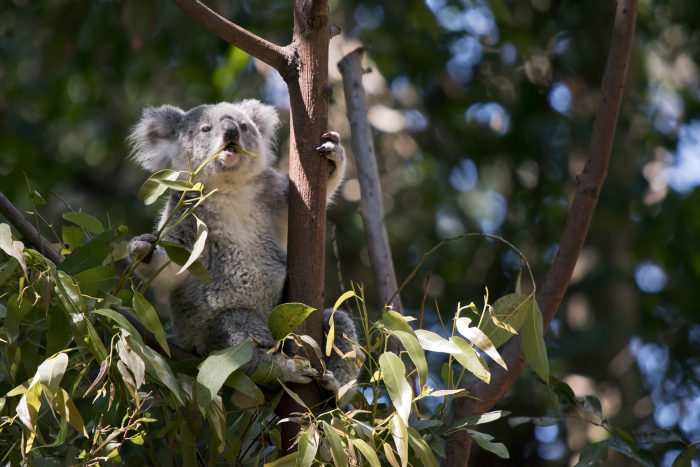A small national park in Australia became surrounded by farmland, thereby preventing a growing population of koalas from moving on to other areas of forest. Researchers had identified that there would be insufficient food if numbers were not managed and so koalas had to be captured and relocated through human intervention.
A Finch Senior Consultant travelled to the other side of the world to conduct a risk assessment and develop a safety management system for this important conservation project. The project, lasting several weeks each year, involved a team of people moving through the park to identify koalas hidden in the trees, then coax them down and into large carry crates that could be lifted onto the back of pick-up trucks and transported to other locations. It almost goes without saying that the hazards and risk controls were unusual and largely unique. For example, walking while looking up at the trees was a hazard in itself – the park surrounds a volcano that had recently, in geological terms, become extinct, so the landscape was strewn with rough, sharp volcanic rock that could easily be tripped over, resulting in injury. Leeches were also prevalent in the undergrowth, as well as venomous snakes. As if that wasn’t enough, Koalas have sharp claws, which they use to grip while climbing and to defend themselves when threatened, and can become very aggressive when agitated.
Overall, the method was to attempt to persuade each koala to come down from a tree by annoying it with a little flag attached to a long pole, which was shaken in front of its face. However, sometimes that didn’t work and someone would need to climb the tree to engage the koala up-close. The problem was that, not only did this create a fall risk for the climber, but it also created a fall risk for the koala, and so the remainder of the team needed to hold out a stretched sheet of canvas, ready to catch the animal if it fell. Falling koalas presented in themselves!
During the first day of our consultant being on-site, the project had to be abandoned owing to the outbreak of bushfire. However, once the fire had been safely extinguished the work was able to be completed, the risk management strategies and work procedures proved successful and, most importantly, no animals were harmed in the making of the safety management system.
